A peel-and-stick backsplash is a budget-friendly way to refresh your kitchen’s look without the hassle of traditional tiling. This innovative solution uses an adhesive mat instead of a messy thinset, making it an ideal weekend project for do-it-yourself (DIY) enthusiasts. In this guide, we’ll walk you through the steps of installing an arabesque-style peel-and-stick backsplash with the help of This Old House senior technical editor Mark Powers.
Preparing for Installation of a Peel-and-Stick Backsplash
Before diving into the installation process, proper preparation leads to a successful peel-and-stick backsplash project. Follow these steps to make sure your workspace is ready.
Gathering Tools and Materials
To install a peel-and-stick backsplash, you’ll need the following items:
- Adhesive tile mat (such as MusselBound)
- Cleaning supplies (degreaser, sponges, microfiber cloths)
- Grout float
- Measuring tape and level
- Peel-and-stick tiles or panels
- Protective materials (builder’s paper or cardboard)
- Tile spacers
- Utility knife or scissors
Having everything you need on hand will save time during installation. High-quality peel-and-stick tiles, a durable adhesive mat, and proper cutting tools will help you achieve a polished look.
Cleaning and Preparing the Wall
For the tiles to stick properly, your wall needs to be clean and smooth. Powers emphasizes the importance of this step. Here’s how to prepare your wall:
- Cut power to any outlets in the backsplash area.
- Remove outlet covers and add extension rings if necessary.
- Clean the wall thoroughly with a degreaser to remove any grease or grime.
- Allow the wall to dry completely before proceeding.
Before you move on, also check for any cracks or bumps on the wall and repair them as needed so that the tiles stick well.
Planning Your Layout
Careful planning leads to a polished final look. Consider these factors when planning your layout:
- Determine the center point of your main wall (usually the sink wall).
- Dry-fit the tiles by laying them out without sticking them down. This allows you to make adjustments before permanently placing the tiles.
- Measure the backsplash area and calculate the number of tiles needed.
- Plan for any outlets or corners that require special cuts.
Planning the layout first helps you create a balanced design without last-minute adjustments.
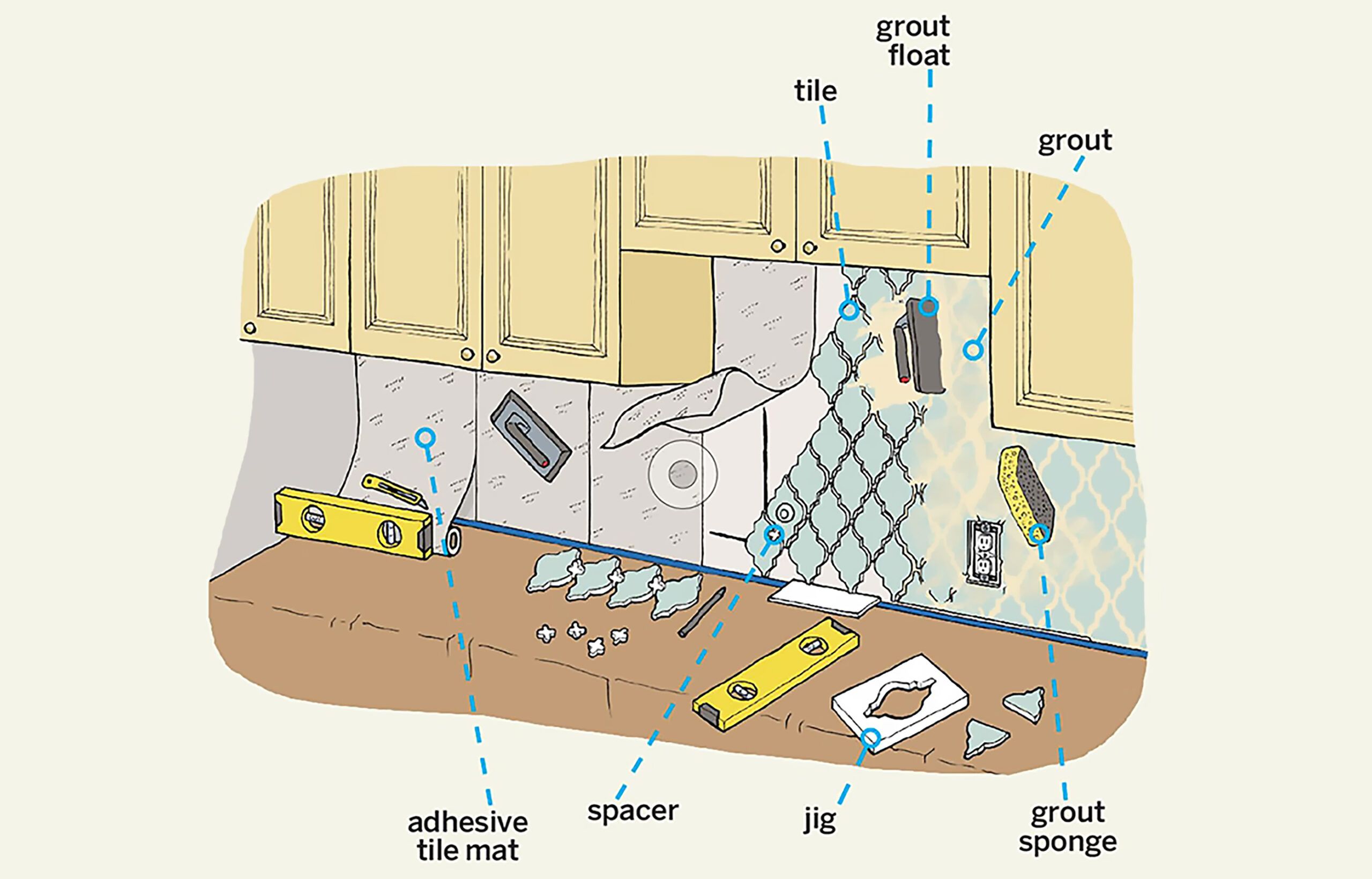
Protecting Surrounding Areas
To keep your kitchen clean during the installation:
- Cover countertops with builder’s paper or cardboard.
- Use painter’s tape to secure the coverings.
- Move any nearby items out of the way to prevent damage.
How To Install Peel-and-Stick Backsplash
The adhesive mat is the foundation of your peel-and-stick backsplash. Follow these steps for proper installation:
Adhere the First Section
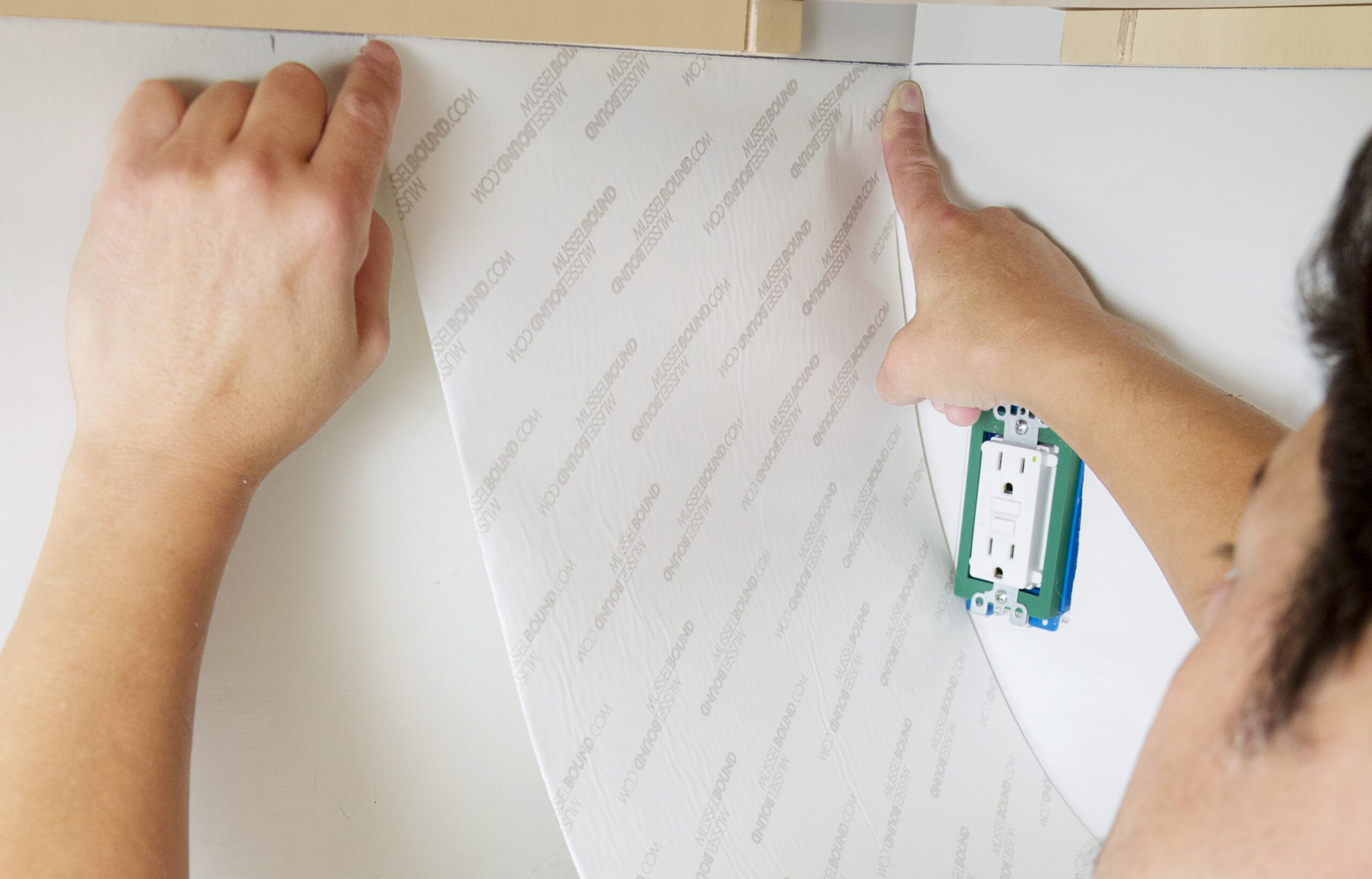
Starting at a corner, stick the mat to the top of the wall under the cabinet. Press the corners in place lightly so you can reposition them if necessary.
Square up the mat along the corner, then touch it to the wall, working from the top down to avoid creating air bubbles. Use a level or straightedge and a breakaway knife to trim the bottom at the countertop.
Place the Other Sections
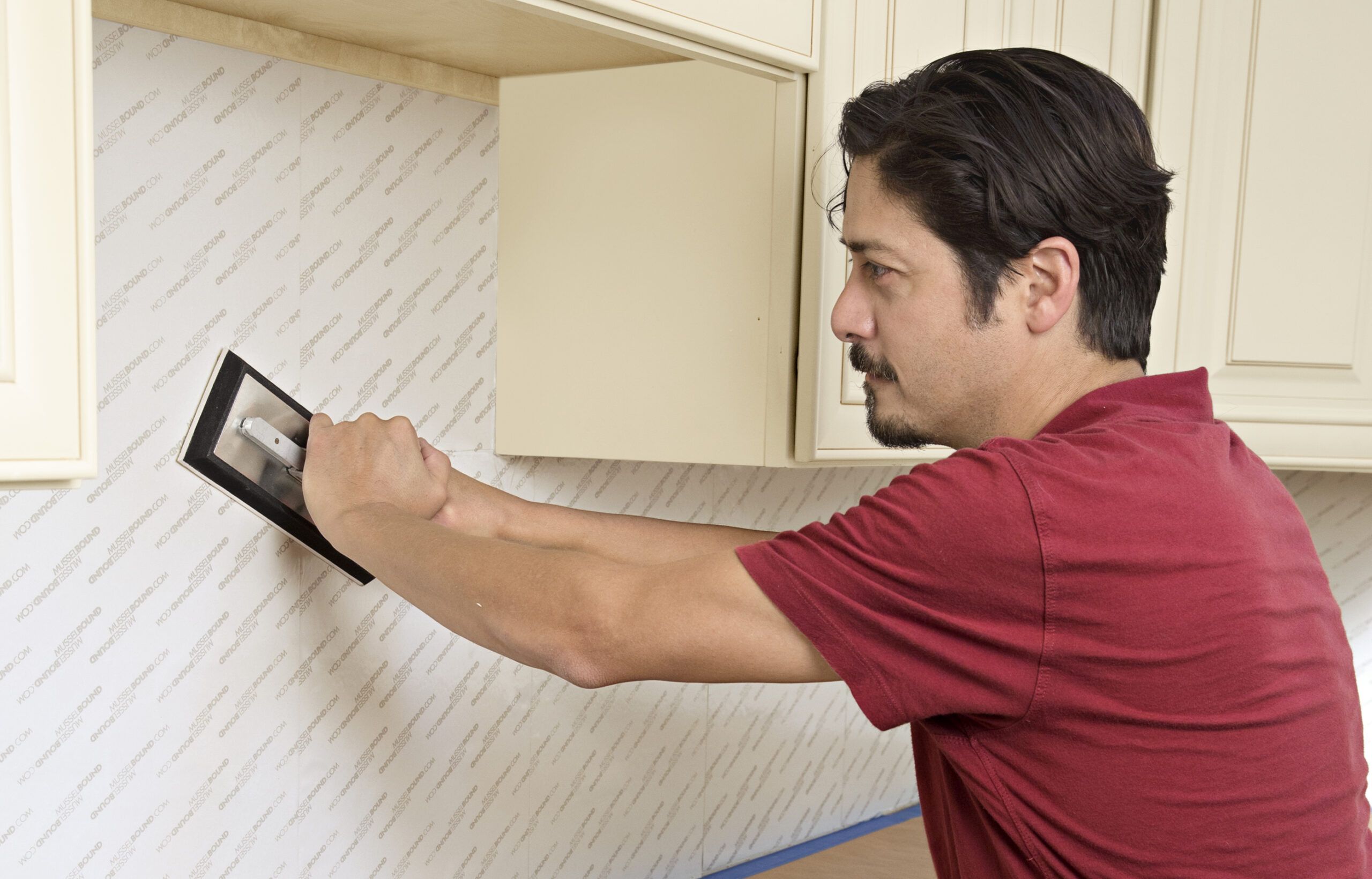
Position and trim the next section of mat the same way. To reposition a section, gently lift it off the wall by hand—it’ll stick to any tool. Continue, covering the entire backsplash. Use a grout float to squeegee out any air bubbles, then press on each section of mat for five seconds, bonding it to the wall.
Dry-Fit the Pattern
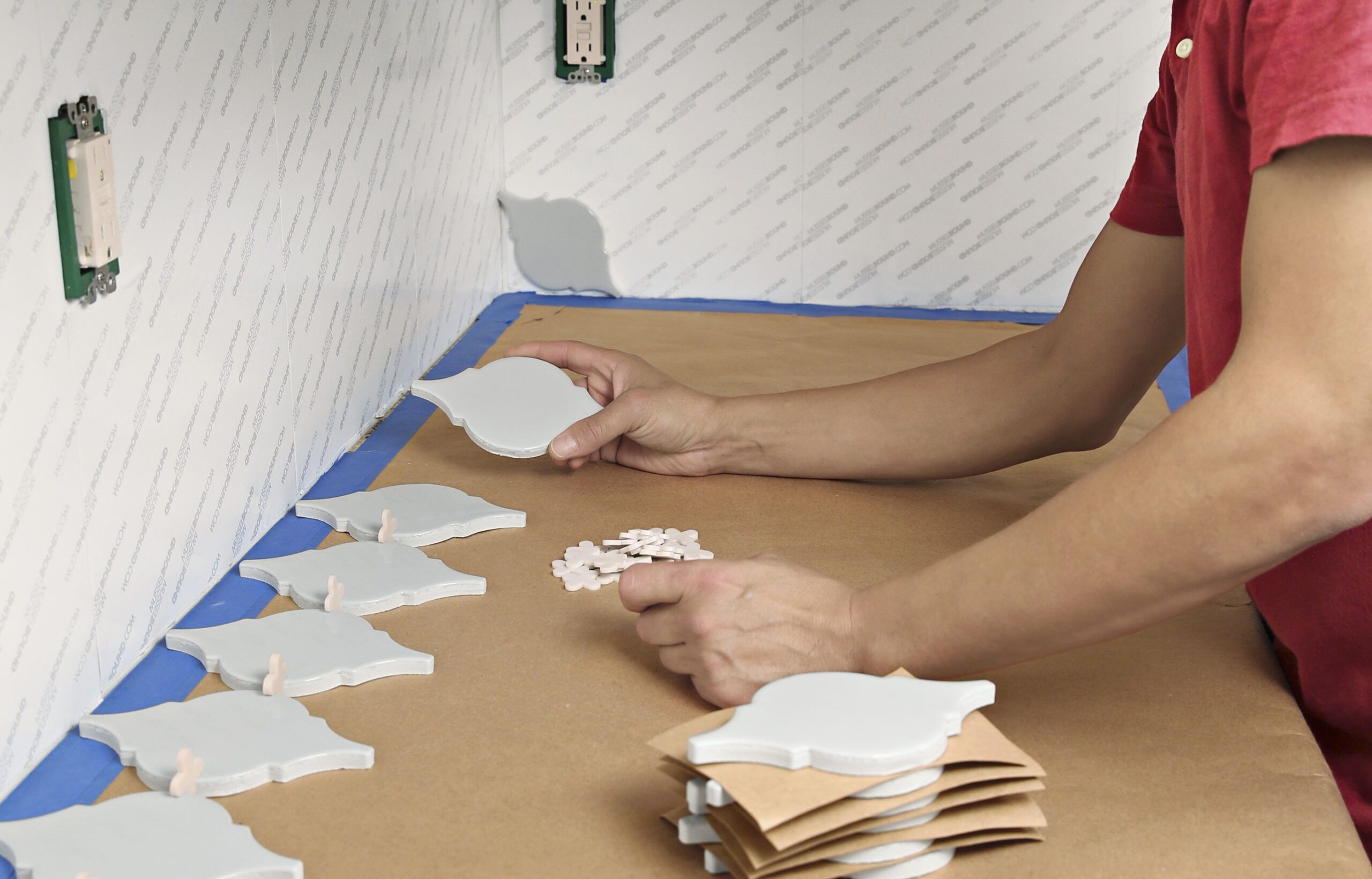
Measure and mark the center of the backsplash’s feature wall—in this case, the sink wall—on the painter’s tape. We removed the faucet to allow more working room.
Center a tile at the mark. Start laying out tiles to one side, using spacers between them, to see where the last tile in the row lands. The feature wall tile will butt into the tile of the adjacent wall, so place a tile on edge to account for that.
Measure the Gap
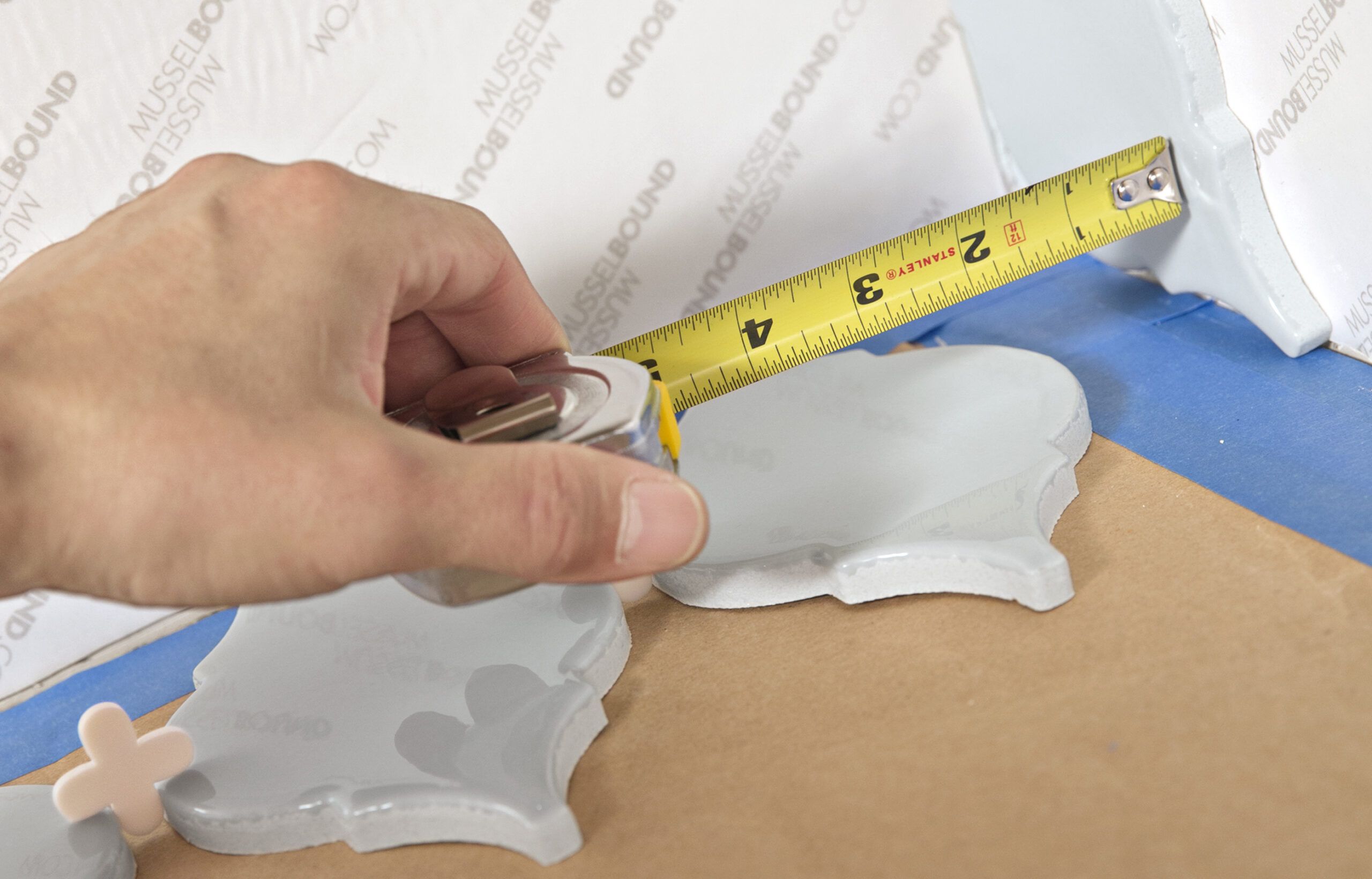
When you reach the corner and can’t place another full tile, measure the gap to the tile on the adjacent wall. Subtract the width of the spacer (3/8-inch in this case).
Adjust and Test
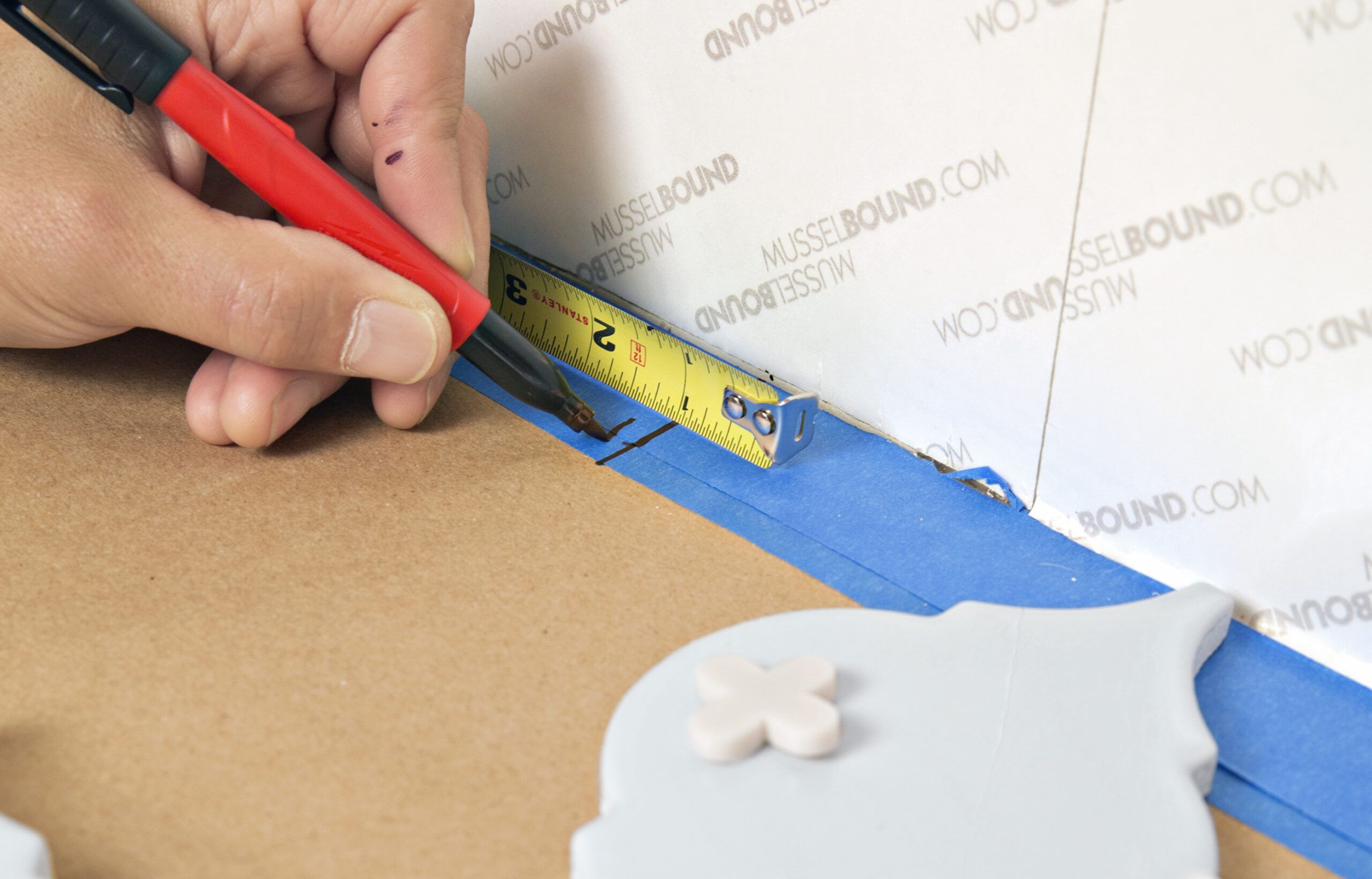
Use the measurement to shift the centerline, if necessary, to finish the course with tiles of at least a half width. Make a new mark for the adjusted centerline, as shown, and lay out the tiles again to make sure the last tile lands the way you like.
Finish dry-fitting the other half of the row and check that the last tile will be more than a sliver. Rather than centering the pattern top to bottom, we wanted to start with a full tile at the countertop (allowing for a caulk line). This minimizes the number of tiles that need to be cut.
Transfer the New Layout Line
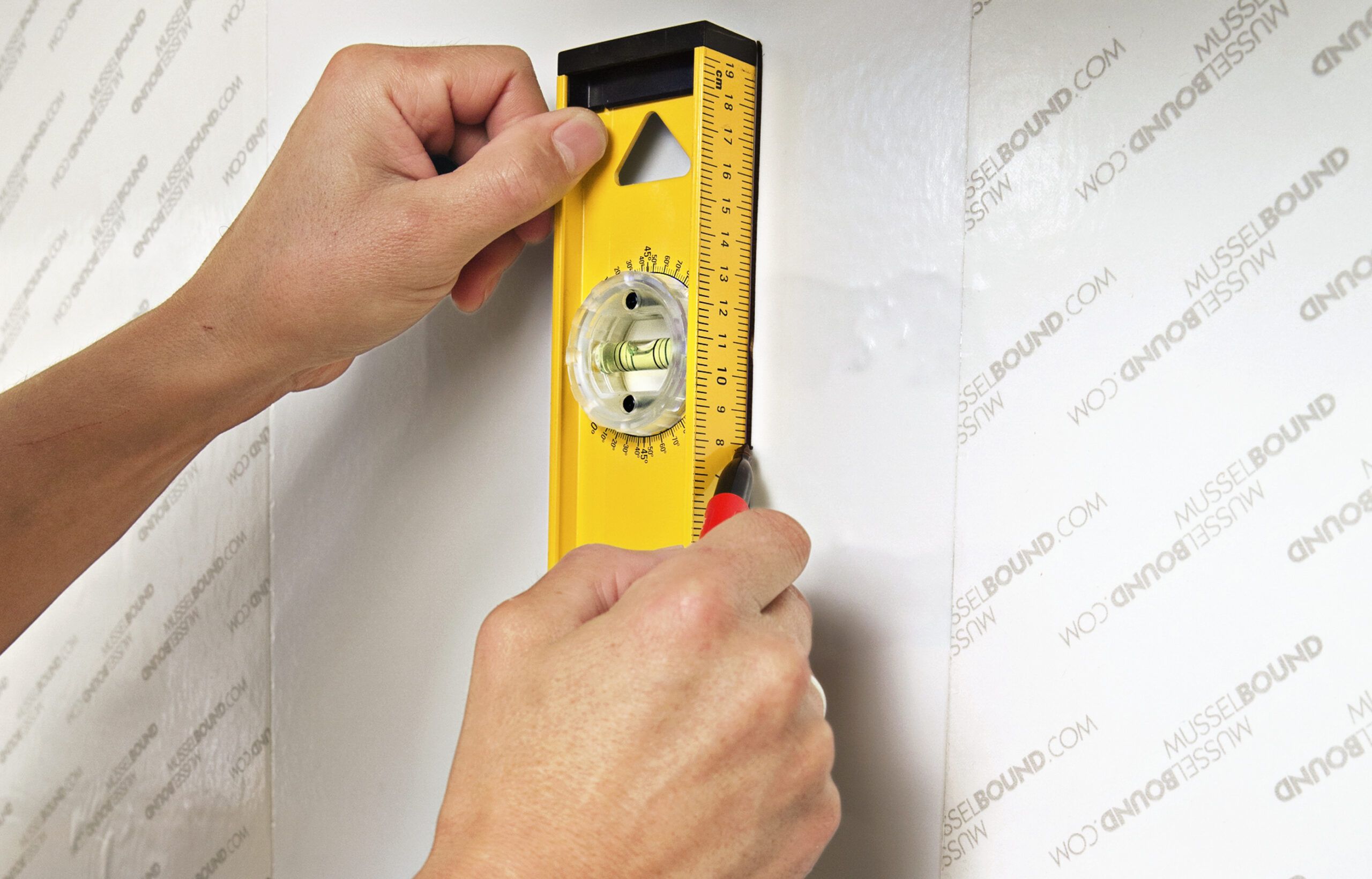
Peel the lining from the mat just above the new centerline. Lightly place a level plumb with the mark and carry the line up the backsplash. Use a piece of thin scrap or cardboard on the countertop as a spacer for the caulk line.
Then measure the height of a tile, divide it in half, and measure up from the spacer that distance along the plumb line. Use the level to make a perpendicular line, creating a crosshair for the first tile.
Establish the Pattern
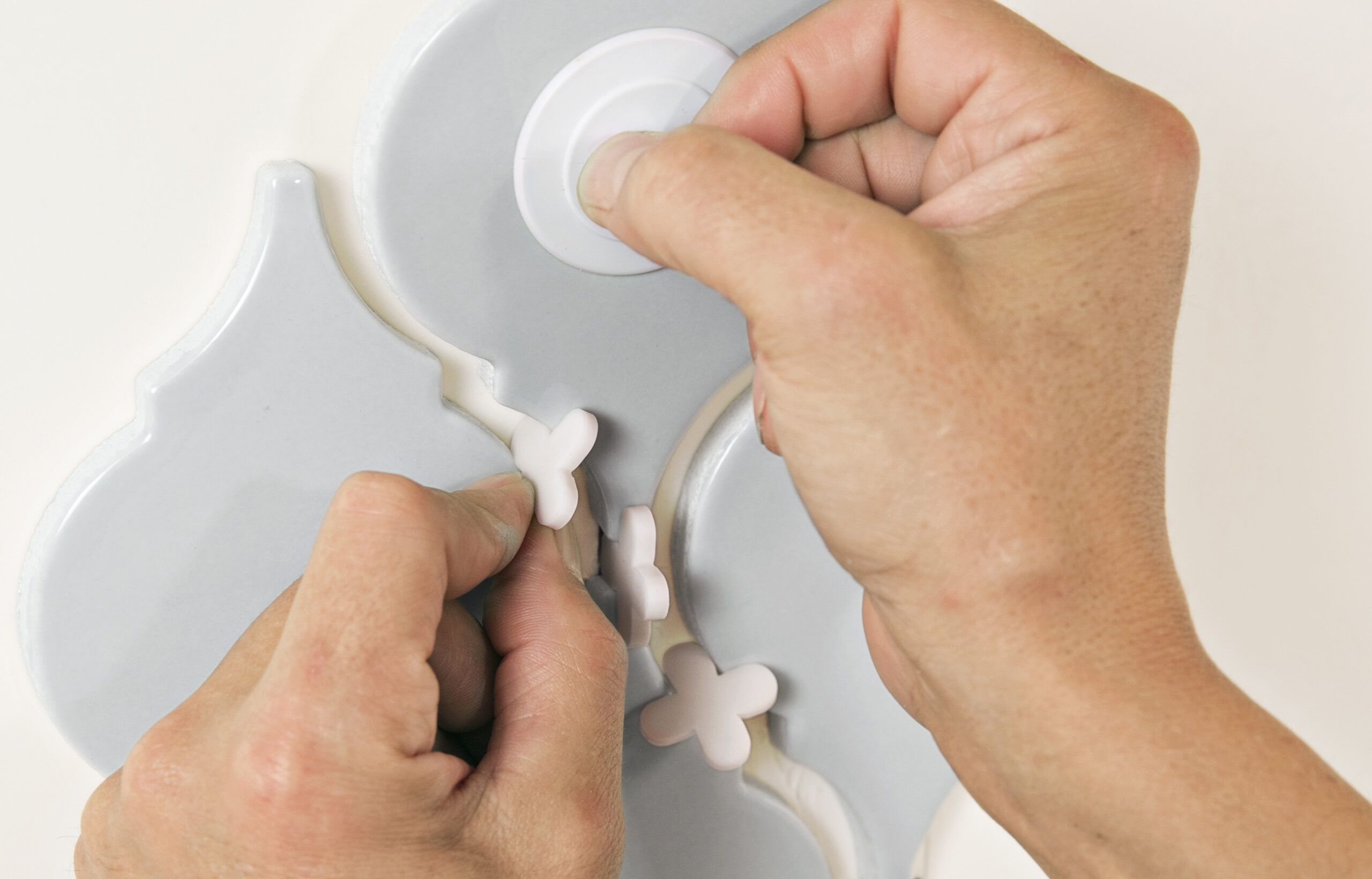
Center the first tile on the crosshair, then tap the top and bottom to tack it in place on the mat. Reposition tiles by prying them off with a 5-in-1 tool. Use spacers to line up and place adjacent tiles, building the pattern up and out from the first tile.
Mark the Tile
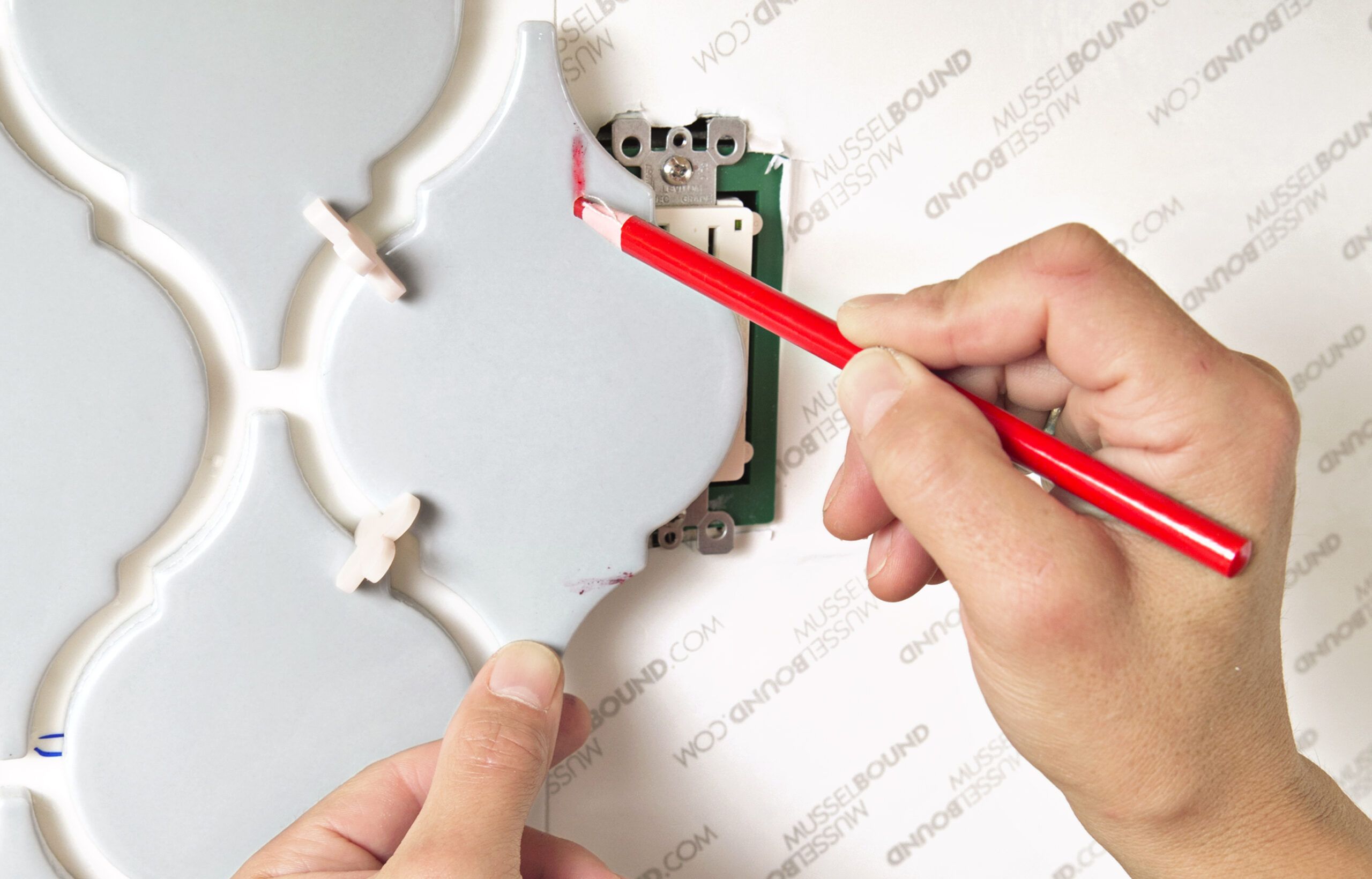
When you reach an outlet, hold the tile in position by tacking one edge to the mat against spacers. Use a wax pencil to mark where the tile overlaps the receptacle box.
Trim Tile to Fit
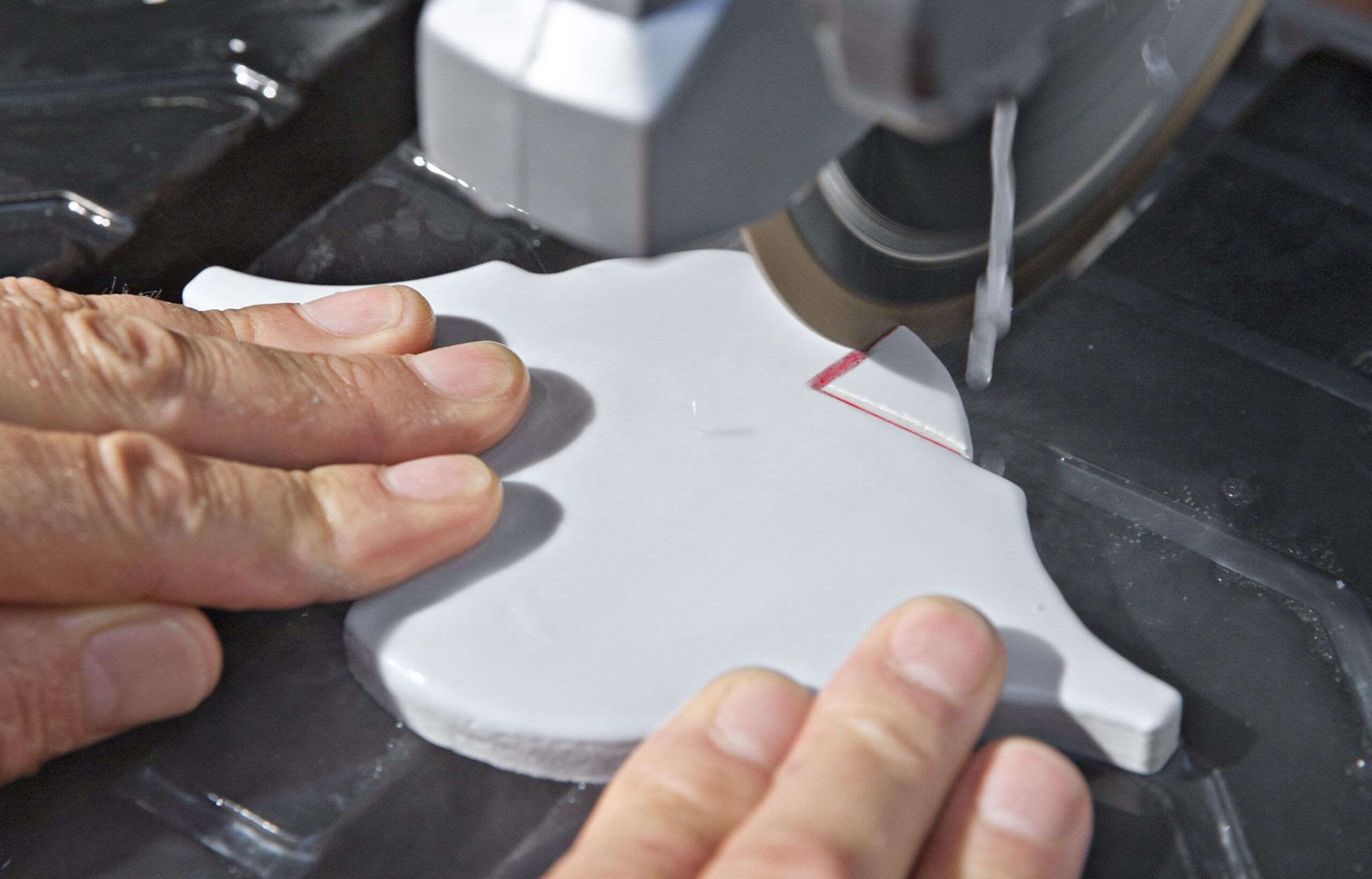
To cut the notch, use the tile saw to make two straight cuts (one along each wax pencil line) until they meet. Flip the tile facedown and complete the cuts. If the connection isn’t perfect, don’t worry. You’ll cover that corner with the receptacle plate.
Tip: Unlike thinset, the adhesive mat doesn’t allow for adjustments in place. You can use a suction cup to get a good grip on nonrectangular tiles, so you can set each one where it belongs the first time.
Make a Jig
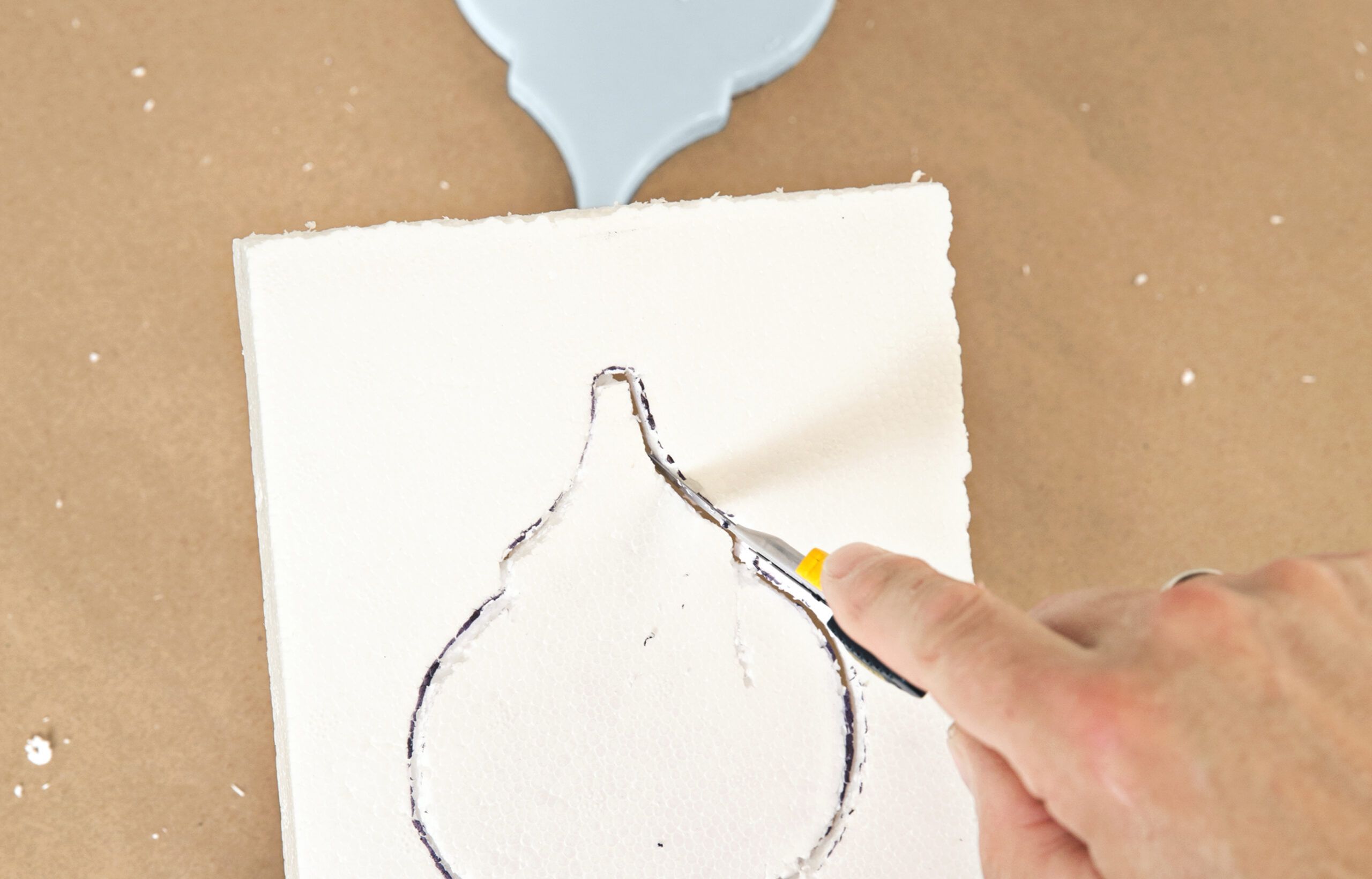
Once you’ve filled in all the full tiles along one wall, you can cut and install the partial tiles. First, cut a rectangle from a piece of foam to use as a jig, preserving at least one corner from the factory edges.
Place a tile on the foam and center it using the combination square, by making sure the border of the jig is equal on opposite sides of the tile. Outline the tile with the felt-tip marker, then use a breakaway knife to cut out the shape.
Cut Tiles
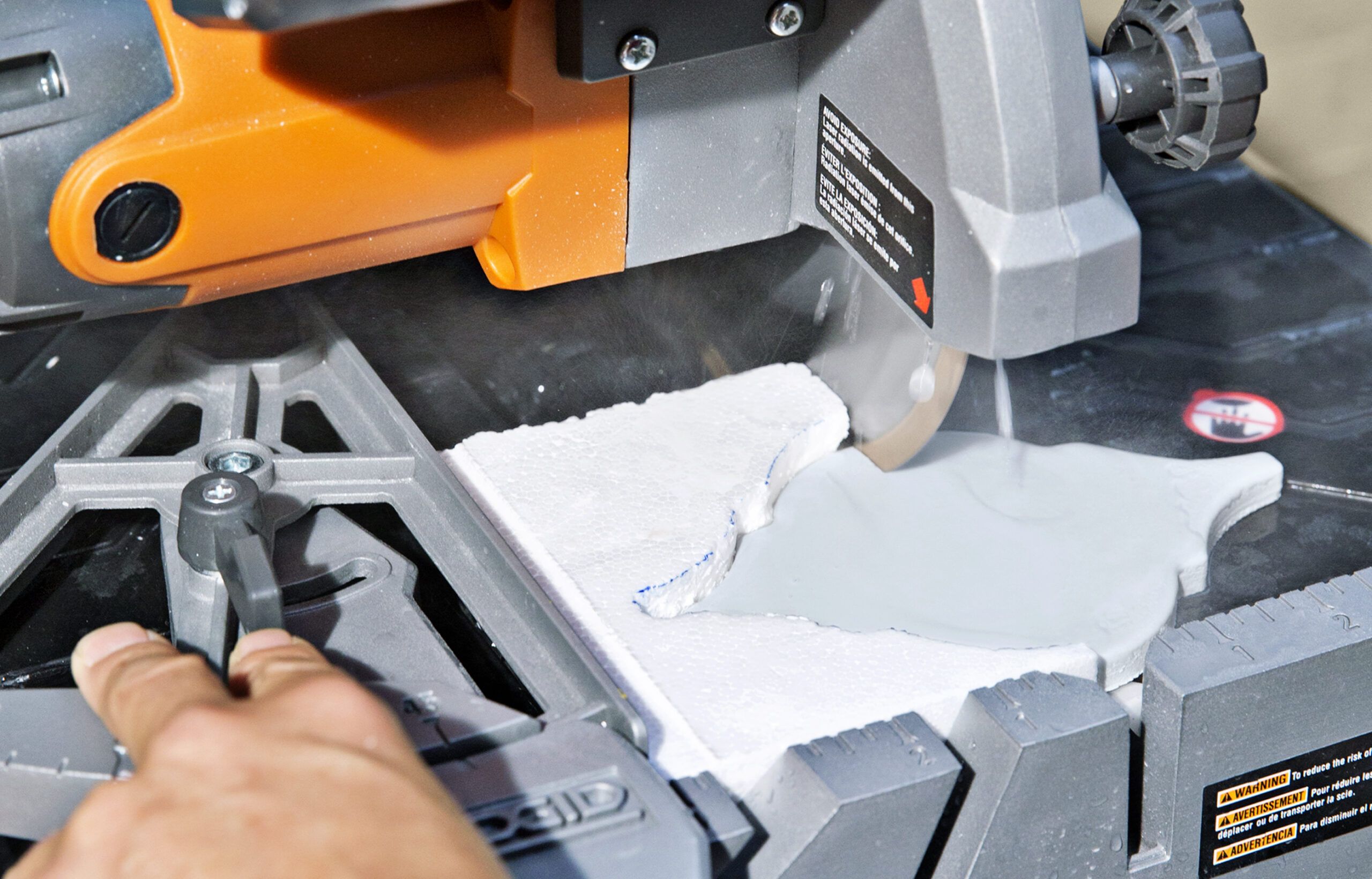
Measure the spaces for the bottom row of half tiles from the caulk-line spacer to the tile above. Subtract the width of your tile spacers, and mark the tile. Place it in the jig, with the factory corner nestled where the saw’s fence meets the edge of the table. Push the tile through the blade, holding the foam jig in place if necessary.
Tip: To prevent chip-out, adjust the depth of the saw blade so that the abrasive band just slices through the bottom of the tile.
Place Half Tiles
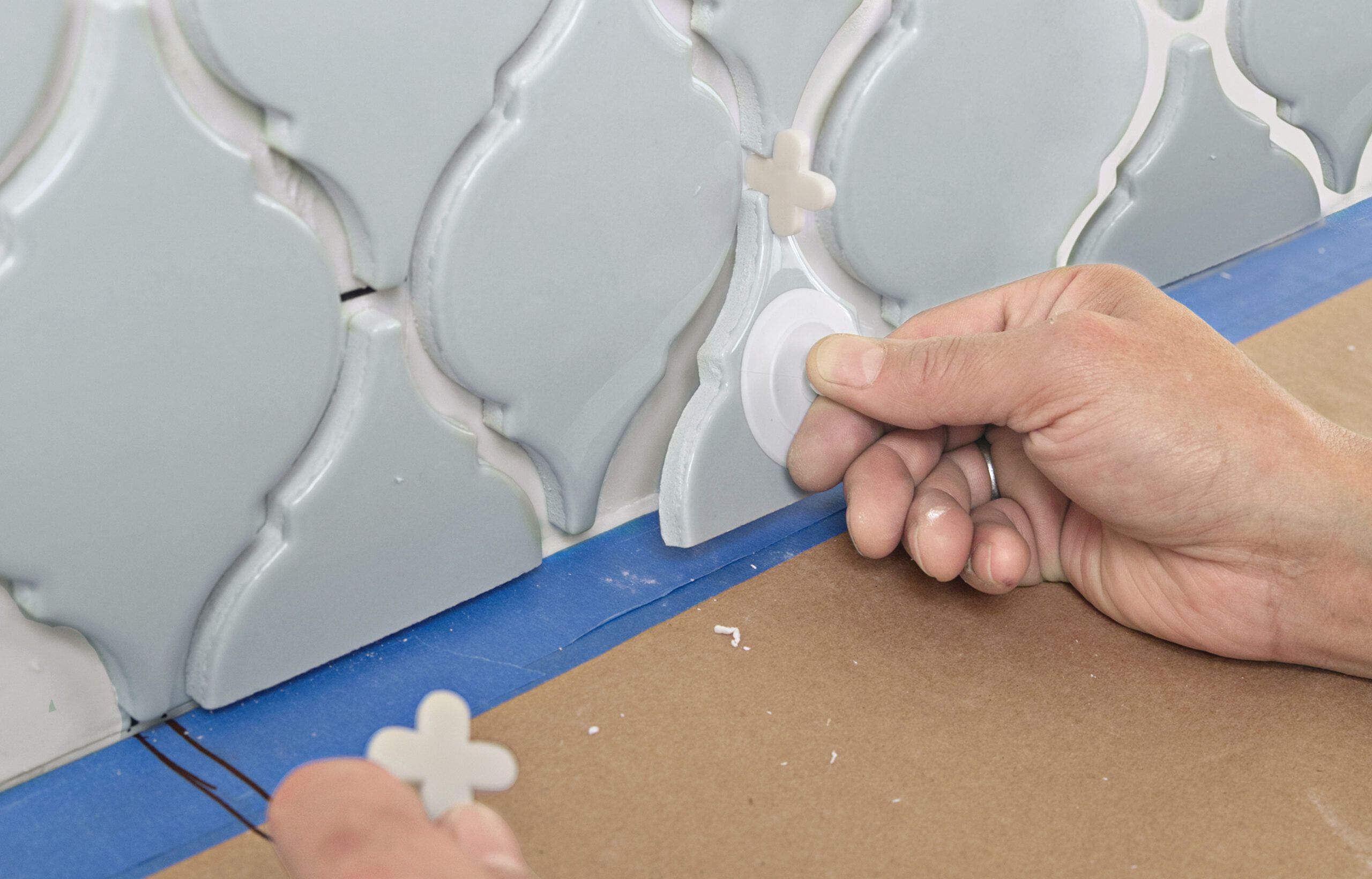
Stick a spacer to the mat beneath the tile above, as shown, and touch the tip of the half tile to the mat. Then place a second spacer between the half tile and its neighbor. Press the bottom of the half tile against the mat.
Measure for the Last Tile

Measure between the last tile in the course and a tile standing in for those that will cover the adjacent wall, as shown. Subtract the width of the grout-line spacer.
Transfer the Mark
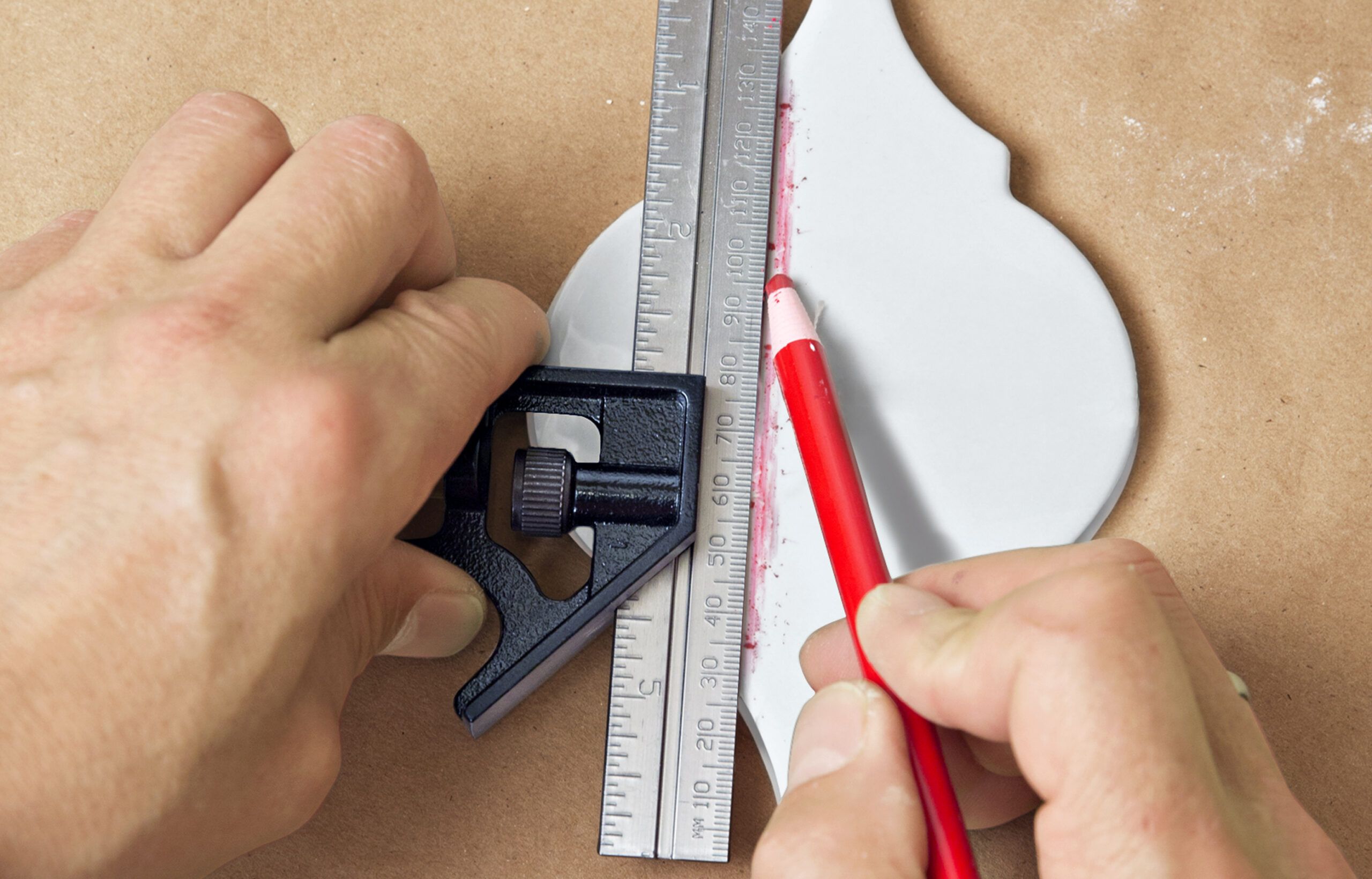
Set a combination square to that measurement, strike a line on a full tile, then use a vertically oriented jig to cut it—but don’t set the partial tile. You’ll cut and set its mating piece first, which keeps the corner joint less conspicuous.
Start the Return Wall
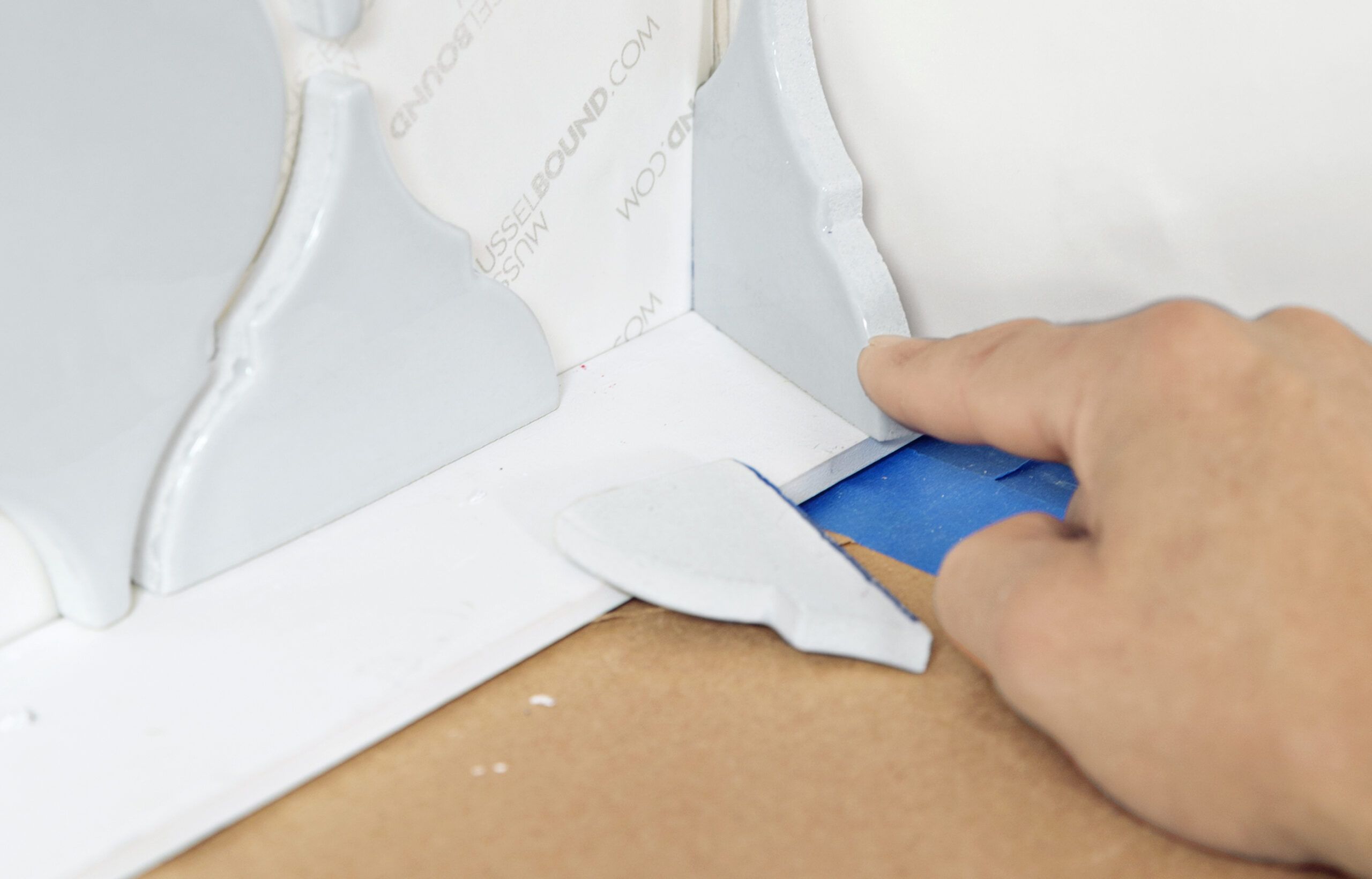
The exposed faces of the two pieces that form the corner should add up to the width of one full tile. To mark the return piece without measuring, stack the partial tile on it and mark along the cut edge. Then adjust the cutline to make the return tile wider by the thickness of the tile, to create a butt joint.
Cut the tile and set it into the corner. Then, add the last piece of the feature wall to complete the corner. Finish the feature wall by cutting the rest of the corner tiles the same way.
To start the return wall, add a spacer to the first return tile, then measure off that to make new layout lines.
Trowel on Grout
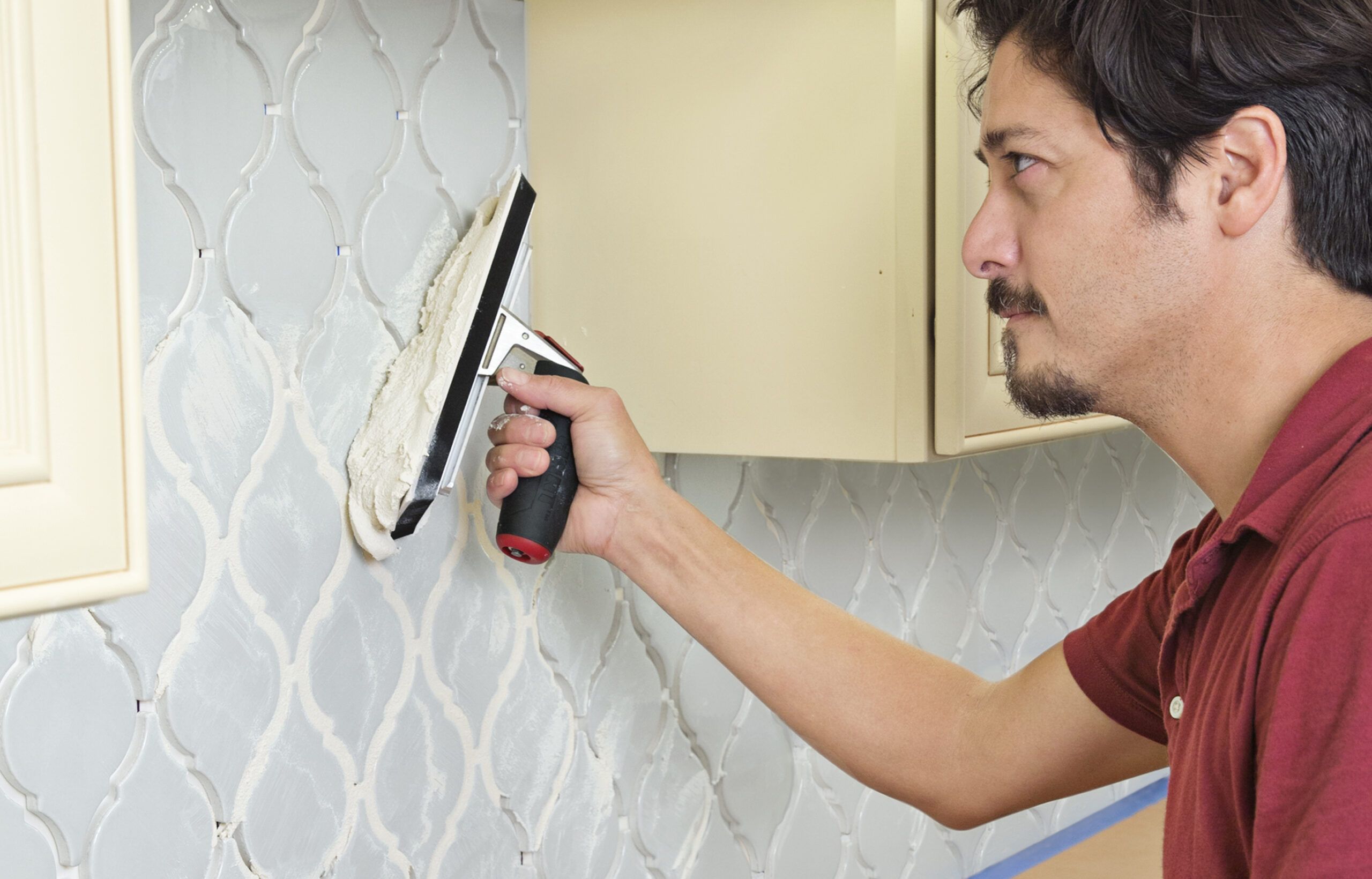
Once you finish placing all your tiles, use the rubber grout float to set them by pressing each one for five seconds. Use a grout sponge and water to moisten the surface of as much tile as you can grout in five minutes.
Spread the grout, approaching the joints at a diagonal while holding the float at about 45 degrees to the backsplash. Work the grout into the joints, then pull diagonally across the tiles to remove the excess.
Sponge Tiles Clean
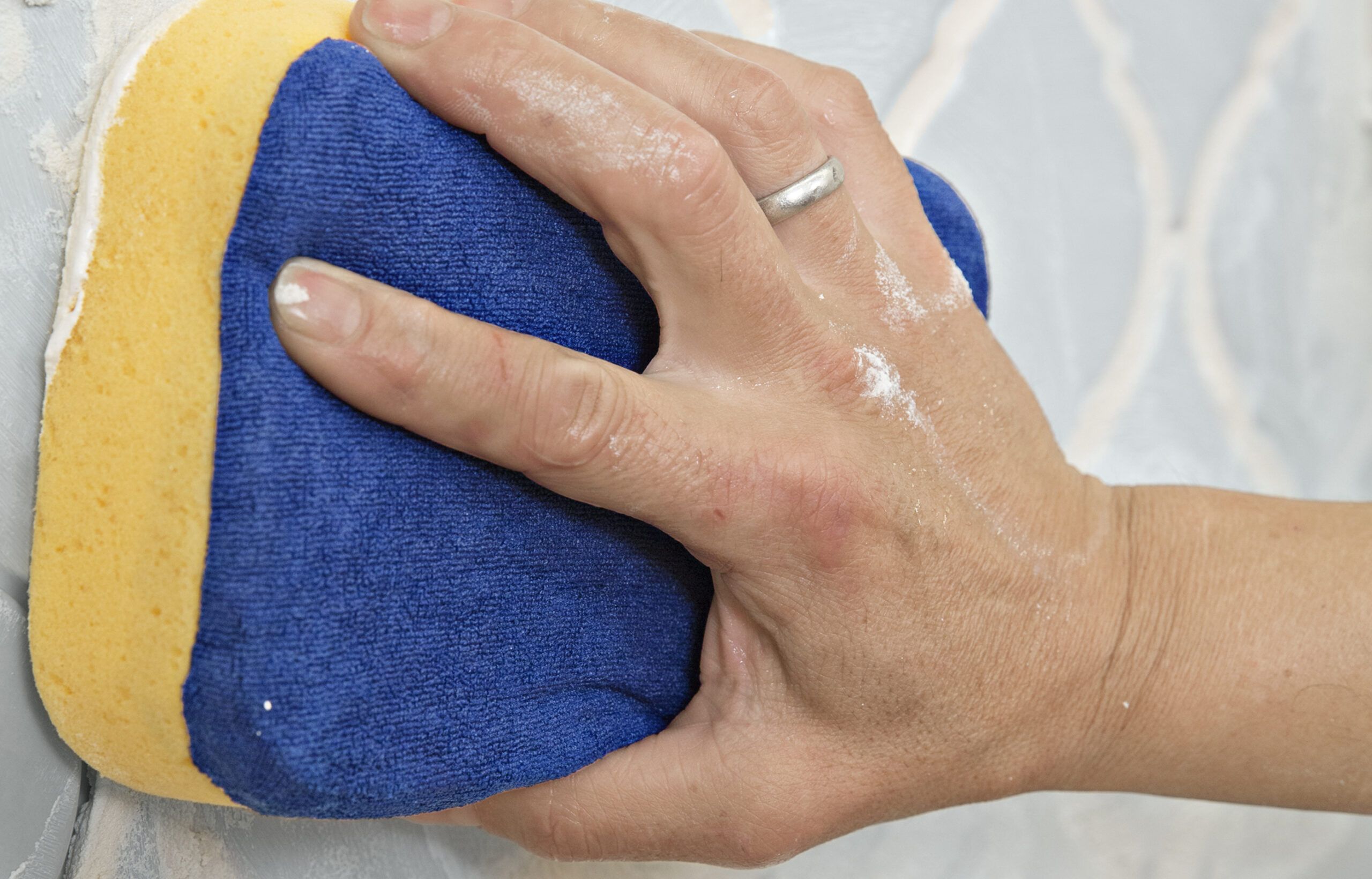
Wet a sponge in a bucket of clean water and clean grout and residue off the tiles with a circular motion, then rinse the sponge in a second bucket.
Take care not to wipe so aggressively that you pull grout out of the joints. Rinse and repeat with fresh water until any haze is gone and the moisture left on the tiles is clear. Then, wrap a clean sponge in a microfiber cloth and blot the backsplash dry. Continue grouting in sections. Use textured acrylic caulk the color of the grout to fill the seam between the tile and countertop.
Maintenance and Care of Your New Peel-and-Stick Backsplash
To keep your peel-and-stick backsplash looking great, follow these simple maintenance tips:
- Fix any loose tiles promptly to prevent further issues.
- Avoid harsh chemicals that could damage the tile or grout.
- Consider sealing grout lines for added protection against moisture and stains.
- Clean regularly with a mild, nonabrasive cleaner.
- Keep an eye out for any signs of wear or damage and repair as needed.
Tips for Long-lasting Appearance
Take these precautions to help preserve the style and functionality of your backsplash:
- Periodically check the adhesion of the tiles, especially around high-moisture areas.
- Use trivets or mats to avoid heat damage to the backsplash.
- Wipe spills immediately to prevent stains.